By Laura Dodson
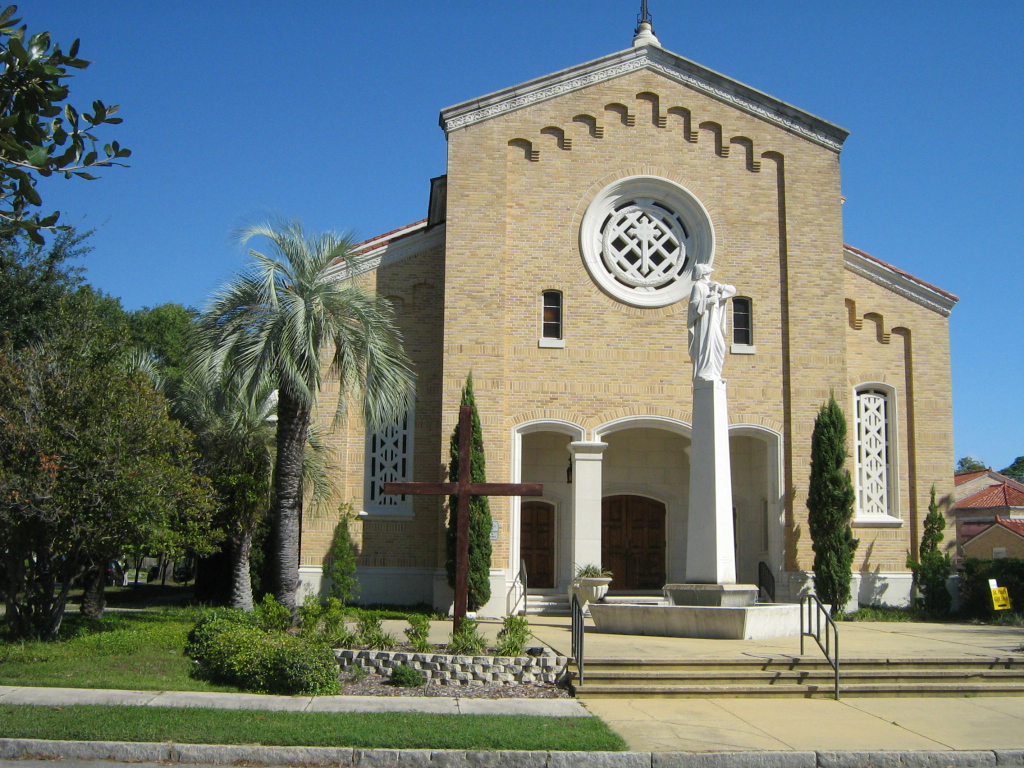
The zeal of St. Paul stirred gently in the hearts of a small group of Catholics who petitioned St. Augustine Bishop Michael J. Curley in 1914 to purchase land to build a church in the growing Riverside suburb of Jacksonville.
“As we reflect on the call that necessitated the creation of this great church named after the greatest missionary disciple, Apostle Paul,” said Father Leonard Chuwa, pastor, “we look back to the times this church was full of hungry believers craving what each soul was created for – God.”
The faithful continued to grow in numbers and zeal in the early years, but World War I intervened. On May 21, 1922, Father William Barry gathered a group of women commissioning them to raise the needed funds. On May 31, he met with the men, and the mission church of St. Paul’s was formed.
“I can only ask that God will bless the work that you have started so well,” said Bishop Patrick Barry on Easter Sunday, April 1, 1923, as he blessed the foundation and the cornerstone for the first parish building. The 6,000-square-foot building has three stories with a church sanctuary on the first floor, school rooms on the second and an auditorium and temporary convent on the third. The first Mass was celebrated on Sept. 16, 1923.
“My grandmother shared how delighted she was not to have to take the trolley to attend Mass at Immaculate Conception in downtown Jacksonville,” said Sydney Simmons whose grandparents, Sydney and Helene Simmons lived on St. Johns Avenue and were among the early parishioners. “She said how proud she and her friends were at the time to have a new parish in the heart of Riverside.”
That zeal only continued to grow despite the economic times of those early years.
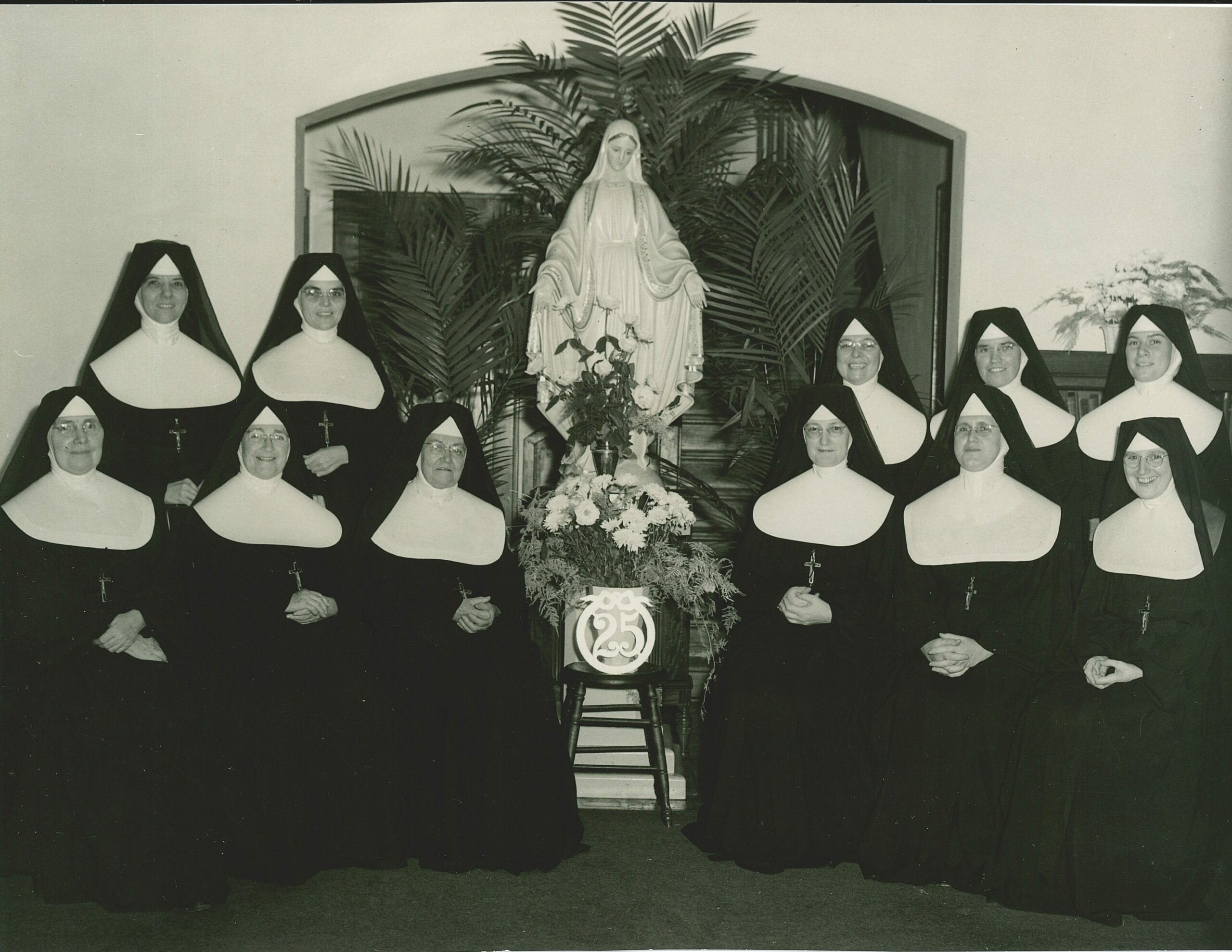
St. Paul’s Women’s Guild/Council of Catholic Women was formed from that first group of women and their fundraising efforts were so successful that more land was acquired and a convent, rectory and parish auditorium were constructed. In 1939, ground was broken for the new Mediterranean Revival-style church that is a historic Riverside presence today.
“My Father told me stories about how the church itself was transformed over time when he was a little boy,” Simmons continued, “from a relatively humble interior to what it is today. It opened with amber glass windows – the only original windows are the two tiny ones now found near the confessionals. The magnificent Rambusch stained glass windows and the murals by Hugo Olms were added much later. After he saw the installation of the baldacchino over the altar, he went home and asked my grandmother why the priest needed such a big four-poster bed.”
The development of the school was integral in the formation of generations of Catholics and the life of the parish. According to archival records, “St. Paul Parochial School formally opened Sept. 21, 1923, with the Sisters of St. Joseph in charge.”
There were seven sisters led by Sister St. Andrew as principal with an initial registration of 120 students in grades one through seven growing to 130 students through grade eight during the academic year. High school classes were added in Sept. 1924 and continued until Bishop Kenny High School was opened in 1952.
“I first came to St. Paul’s in 1950,” Michael Corrigan said. “I’ve been a parishioner ever since. I have served in every capacity: usher, building and grounds, president of the Parish Council, Finance Committee chair, and raised five children and 13 grandchildren all here. I feel strongly about St. Paul’s.”
Corrigan’s daughter, Casey Corrigan Rogers is a mainstay of the Parent Association and the parish.
“I was educated by the Sisters of St. Joseph,” Rogers said. “It was a constant lesson of humility and discipline with a Christ-centered education that created the foundation within me of love and service to our parish.”
The school has been consistently recognized for its excellence – on Oct. 12, 1926, it was placed on the list of schools affiliated with the Catholic University of America in Washington, D.C. In 1956, the first Morning Star School opened on the campus of St. Paul’s for physically challenged students in Jacksonville.
Sister of St. Joseph Elise Kennedy volunteered at Morning Star when she was a student at St. Paul’s. She later entered the novitiate of the Sisters of St. Joseph after graduating from high school and now teaches religious education to primary grades and is an office assistant at Morning Star School now located next to Christ the King Parish in Arlington.
“The legacy of the sisters lives on,” said Sister Elise whose mother also attended St. Paul’s School. “I had Sister Boniface in third grade and decided then I wanted to be a sister; I wanted to be ‘just like her!’ She was not only an excellent teacher, but she also looked out for families in need. She was known to gather people to help people in need in the neighborhood.
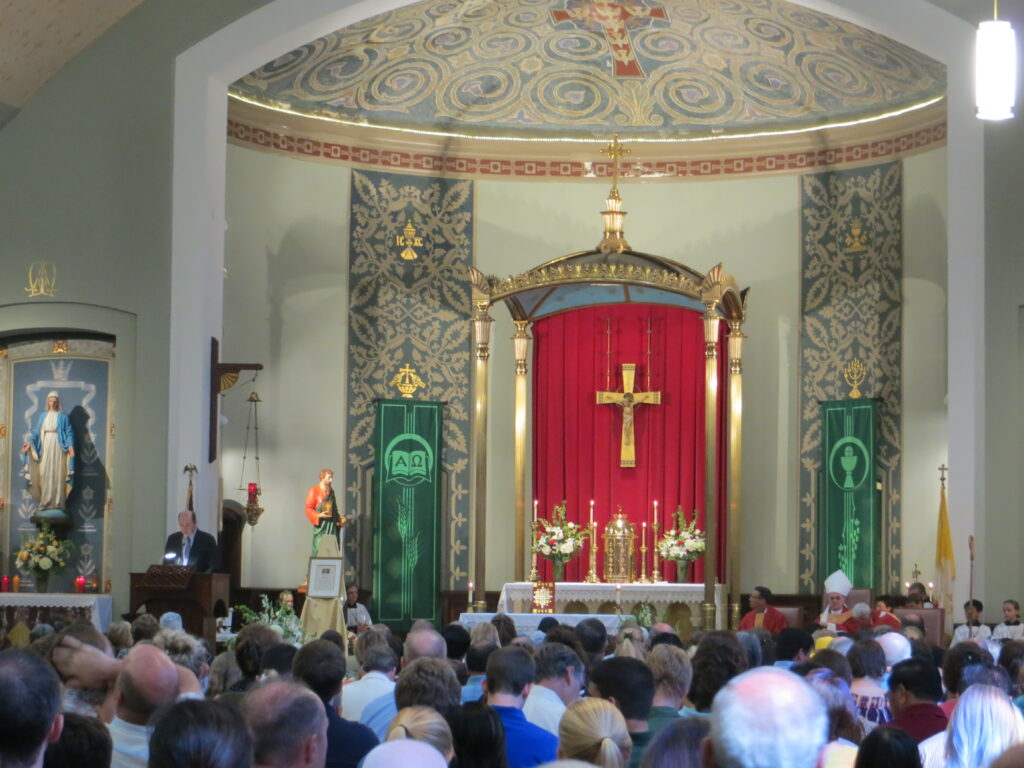
Addressing community needs has been a parish priority from the outset. A St. Vincent de Paul ministry to the poor began in 1932 with food and financial assistance distributed from first the rectory and then the parish office. Under the leadership of Ed and Ruth Brown, it became affiliated with the national organization. It grew from their home garage, then a loaned house across from the church, a large empty building loaned by Ascension St. Vincent Hospital, and finally with a collaboration of parishes now has its own food pantry and thrift shop.
“There were so many miracles,” Ruth said. “This little bitty place we started is now huge, helping people with all kinds of needs. We were simply the instrument for God to work through us.”
The school now boasts its own ministry to the poor – the “Mini-Vinnie’s” collecting food and essential items every month and reaching out with notes to nursing homes.
Elizabeth (Liz) Barton Till whose grandparents, Quinn and Margaret Barton were founding parishioners has accepted the baton of leadership from Ruth. Both Liz’s father and mother attended St. Paul’s School as did her daughter, Sarah.
“We rely totally on Divine Providence,” Till said. “God provides in the most unusual ways. A couple of months ago, a parishioner had bunk beds to donate, but we didn’t need them. The very next day someone called needing bunkbeds – we got a truck and delivered them. This is a very special place. I feel blessed to be here.”
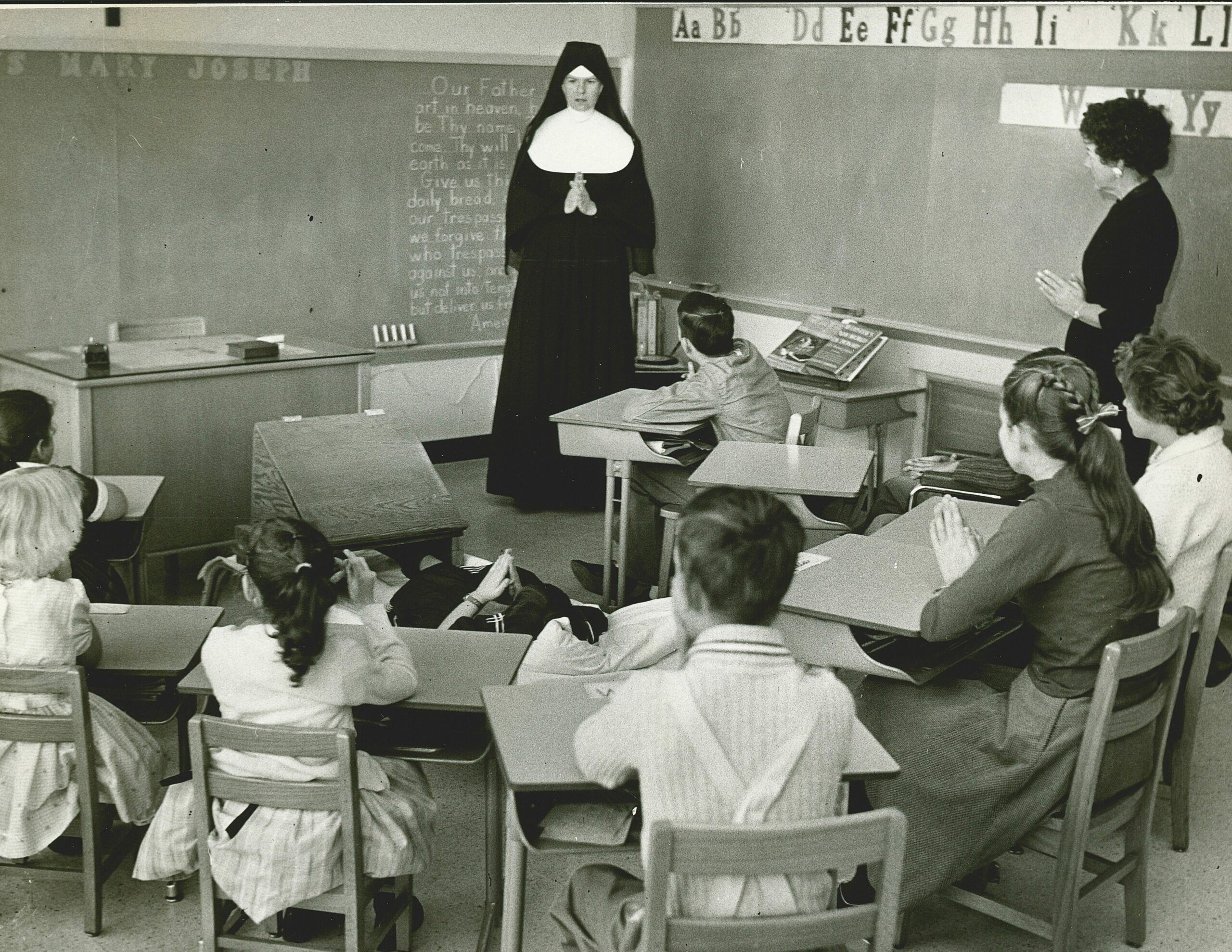
The parish was a primary support of St. Mary’s Orphan Home before Catholic Charities was formally established. In fact, it was at St. Paul’s that the first organizing committee for Catholic Charities met.
“My grandmother was also on the founding committee of Catholic Charities of Jacksonville in 1944 which formed in our rectory and officially opened Jan. 3, 1945,” shared Simmons who has continued in her footsteps – he is vice-chairman of the National Board of Catholic Charities U.S.A.
Both Bill and Patsy O’Brien are descendants of St. Paul families who were active in pro-life efforts, especially in the 1960s. They still lead the ministry for the parish which now embraces all life issues. Most recently they held a prayer vigil for a death row inmate the night of his execution.
The original men’s group of 1921 became the Holy Name Society and is now the Knights of Columbus.
“We’re here every Sunday serving breakfast,” shared Grand Knight, Michael Lyons who has been in the parish since 2010, “and we reach out to solve problems. We bought an ultrasound machine for the Pregnancy Outreach Center and we’re here to serve in any way we can.”
The Women’s Guild/Council of Catholic Women continues to be a primary support of the parish and community. Through their bazaars, fashion shows, dinners, dances, tea parties and bake sales the parish has funded buildings, furnishings, restoration work and landscaping. Their charitable work has embraced every need from helping international college students away from home during the holidays, to staffing a U.S.O. Red Cross room and providing support for servicemen’s wives and families during the war effort.
“I came to Jacksonville as a stranger 67 years ago,” shared Anita Thompson. “Through St. Paul’s Women’s Guild, I became involved in the Diocesan Council of Catholic Women as an officer and member up through the national level. These women encouraged me to reach out to the greater community in works of service and charity through their ongoing projects and I found a warm welcoming community of close friends who have been at my side, celebrating the good times and offering support and prayers during the rough patches.”
Kim Repper has been the principal of the school for 13 years. Under her direction, an entire year of 100th anniversary plans are in place. She shared that two-thirds of the school has been renovated and the anniversary celebration began with an Open House. She noted that they have anniversary t-shirts, have developed an anniversary prayer and we will install a time capsule. “We are the first school to have a medical partnership with Ascension St. Vincent Hospital to bring our students into the next century of medicine and technology,” said Repper.
“Today, we are confronted with the challenge to once again be like St. Paul, missionary disciples zealously responding to the call to uncover the unrecognized hunger for God and his will which are suppressed by fake and temporal cravings of our times,” said Father Chuwa who celebrates his 25th year of priesthood in this anniversary year. “We look forward to our church of tomorrow once again filled with hungry believers discovering and reflecting God.”
St. Paul Parish Historical Timeline
1914 Bishop Michael J. Curley purchased land at Park and King streets.
1922 250 Catholics petitioned Bishop Patrick Barry for a church in Riverside.
1922 Land at Forbes and Acosta streets was purchased.
1922 On May 21, Father William J. Barry called together the women to form a guild and commissioned them to raise the necessary funds – the first bazaar was held in a restaurant on Bay Street and raised $1,700.
1922 On May 31, Father Barry called together the men, and the mission parish of St. Paul’s was formed.
1923 On March 12, the foundation for the combined church, school and temporary convent was completed.
1923 Easter Sunday (April 1), Bishop Patrick Barry blessed the foundation and the cornerstone of the three-story building.
1923 On May 21, the Women’s Guild/Council of Catholic Women met to celebrate their first annual election of officers.
1923 Sept. 16, Father Barry celebrated the first Mass with 700 people in attendance – the building is 6,000 square feet, and cost $75,000 with the church on the first floor, school on the second floor and a makeshift convent on the third floor
1923 The school opened with seven Sisters of St. Joseph serving 120 students in grades 1-7 with enrollment reaching 130 students and expanded to grade 8 the first year.
1923 On Nov. 25, Bishop Barry dedicated the church and school at two Masses celebrated with 1,000 people in attendance.
1923 Dec. 12, the Sisters of St. Joseph moved into the convent.
1923 At Midnight Mass, 10 boys and 15 girls were the first to receive Holy Communion at St. Paul’s.
1924 Dec. 24, was the first parish mission.
1924 June 15, five students graduated from 8th grade, and high school classes were added for the upcoming school year
1924 Dec. 7, 22 boys, 30 girls and 10 adults received the sacrament of confirmation
1924 Dec. 24, the priests moved into the rectory.
1924 A written history indicates that St. Paul’s organizations were the Women’s Guild, which was affiliated with the National Council of Catholic Women; the Junior Women’s Guild; the Parish Council of Catholic Men with national affiliation and the Sacred Heart League
1926 The parish auditorium was completed.
1927 The first high school graduation with five students.
1930s St. Mary’s Orphan Home helped by St. Paul’s
1931 St. Vincent de Paul ministry began.
1932 Father Lyons sold the property at Park and King streets and purchased property at Park and Acosta for a new church.
1932 Parents Auxiliary formed.
1936 Altar and Rosary Society
1939 The groundbreaking for a new church (8,150 square feet) accommodating 900 people at a cost of $70,000.
1940s St. Paul’s registered more than 5,000 hours in the war efforts which included: a collection of old papers and magazines, rags; contributions to the chaplains in camps; First Aid and nutrition classes; A Red Cross room opened and staffed in cooperation with the U.S.O.; furnished and staffed a day room at Camp Blanding; supported the wives and children of servicemen.
Fundraising included: bazaar, garden parties, raffles, fashion shows, teas, dances rummage sales and plays.
1940 The new church completed.
1940 March 24, Easter Sunday first Mass
1940 April 22, Bishop Patrick Barry dedicated the church
1941 The Rambusch stained glass windows were added
1943 Catholic Charities organizing meeting at St. Paul’s
1944 Jan. 3, Catholic Charities opened.
1952 Bishop Kenny High School opened so St. Paul’s High School was no longer needed.
1953 Legion of Mary
1956 Morning Star School started at St. Paul’s
1978 Statue of the Conversion of St. Paul and fountain erected at the entrance to the church. It was donated by Josephine Scalise in honor of her parents.
